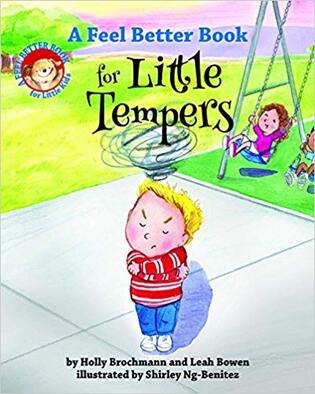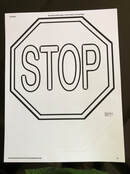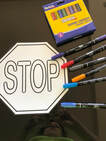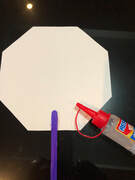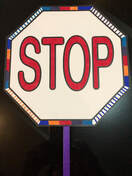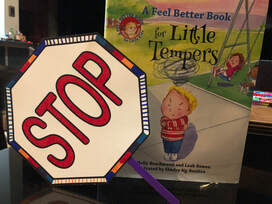|
Welcome back to my blog for 2020!!! First things first. It is my Blog Birthday this month! It has been one year since I started this new endeavor. In honor of my Blog Birthday, I have christened my blog with the name of "Psyched Writer." This seemed appropriate for my overall website and the content of my blog. Why, you ask? I am super PSYCHED about reading, writing and reviewing Children's books with PSYCH content. My background is in PSYCH and I am super PSYCHED that you have joined me on this adventure. Please comment below if you have any comments or ideas for blog posts in 2020. Thanks for being here! Now, moving on to the first post of 2020 . . . A Book Review of A Feel Better Book for Little Tempers
However, eventually children need to get ahold of those BIG feelings and learn to regulate themselves and express those feelings in more socially acceptable ways. If they don't, they will likely have a lifetime of struggles. That is where our job as parents, therapist and teachers comes in. This book, A Feel Better Book for Little Tempers, is a great tool to help us with what seems like, at times, an insurmountable task. The sing-songy rhyme and fun, simple, writing style make this book appropriate for even the youngest of temper throwers! My favorite thing about the structure of this book is that it uses the point of view of what writers(and actors) call "breaking the fourth wall." This means that the authors are talking directly to the reader. This technique draws children into the story and encourages them to participate. This writing style is very useful for this book as it encourages children to talk about their anger and practice the calming techniques. This book is appropriate for young children ages 3 - 6. The illustrator, Shirley Ng-Benitez, has created colorful, vivid illustrations that also pull the youngest readers into the book. The feel of the illustrations are calming, but active, which is exactly what needs to be expressed through this book. She created strong facial expressions on the characters which will help young readers with the important skill of recognizing feelings on others. Through this book, Holly Brochmann and Leah Bowen, have done a wonderful job in covering all the bases of helping children with their angry feelings. The following concepts are covered in the book: 1. A description of what it may feel like in your body when you are angry. "...your ears are quite hot and your cheeks are all red." 2. A definition of temper with very helpful illustrations that further clarify the explanation. 3. Examples of specific behaviors the child may use to express their angry feelings. "You try stomping your feet, maybe a scream or a shout..." 4. Validation and normalization of the feelings of anger. "...It's not only you who has tantrums to throw." 5. Age appropriate suggestions of calming techniques, including movement, sensory pressure (giving yourself a hug), muscle relaxation, deep breathing, etc. The suggestions include physical activity along with imagery which is very useful. A Feel Better Book for Little Tempers reinforces that it is okay to get angry if you know how to express it appropriately. It is written in a gentle, supportive manner that gives little ones the message that they are not alone with their anger and an adult is there to help them. "...Let's practice together, just you and I." The authors empower young readers with the message that they have the ability to take charge of their anger. It shows a sense of pride among the children in the book when they practice the skills. The child likely will not be receptive to this book in the throws of a temper. We sure don't want the book to go flying across the room or have pages ripped out! My suggestion in utilizing this book is to read it regularly when the child is calm. Therefore, when the child does become angry, they are prepared and familiar with what to do. Reminding them and working with them when angry on the strategies presented in this book will go much better if they have the knowledge behind them. With all the above in mind, there is one crucial technique in helping a child with BIG feelings. That is to name the feeling(s), help the child explain why they are having that feeling, and validate it. This simple technique goes a long way in helping to calm little ones and to teach them about their feelings. By the way, this is very helpful for adults as well! The book includes a Note to Parents and Caregivers which is very thorough and helpful in understanding and dealing with a child's temper. I have included an activity below to reinforce the concepts in this book. To learn more about these authors and other Feel Better Books in this series, check out this link to read an interview. https://maginationpress.apabooks.org/?p=1254 Activity Idea for A Feel Better Book for Little TempersThis book provides valuable strategies for young readers to help control their BIG feelings. It will be helpful for the adult to practice these strategies together with the child often. It is also a great idea to model using these strategies in front of your kids when you, yourself, become angry. A technique I have used often in my practice with young children is to utilize role playing techniques to practice important skills. This is like "pretending" and very enjoyable for young children. But first, we need to make a visual aid together. Materials Needed: Stop sign template http://www.supercoloring.com/coloring-pages/stop-sign Sturdy card stock paper Scissors Markers or crayons Glue craft stick Role Playing Exercise
1. Let the child know that you'd like to play a game of pretend. 2. Tell the child that you are both going to take turns pretending to make the other person angry and practice how to handle your anger. 3. The adult starts and, for example, may give the child a toy and then grab it away from them. 4. The adult holds up the handmade STOP sign in front of the child (Giving the message that you stop and think first before reacting). 5. The adult then says "How are you feeling?" or "How did that make you feel?" 6. For younger children you may have feeling pictures nearby so they can choose. 7. Acknowledge their feeling(s) and state how it would have made YOU feel if it happened to you. Maybe ask if it ever happened to them before or tell them about a time that it happened to you and how it worked out. 8. Ask the child "Is it okay to feel that feeling?" "Would it be okay to hit me or call me names?" "Why not?" 9. The adult then asks the child "What can you do instead to calm yourself down?" Show them the options in the book as ideas if necessary. 10. Practice the skill they picked together. 11. Ask how they are feeling after you complete the practice. If they are still feeling angry, have them pick another technique from the book and practice that one together. 12. Provide much positive feedback to the child when practicing the techniques. 13. Now it's the child's turn to make YOU feel angry. Coach them through this. Make sure they hold up the stop sign for you after they make you angry. Handle it inappropriately at first (for example, you can yell or say "You're not my friend anymore!" so they can remind you what you can do. Practice the skill together. 14. Make it fun!
0 Comments
|
Follow me on Twitter, Pinterest and LinkedIn
Categories
All
|
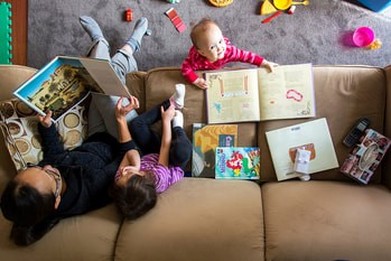
 RSS Feed
RSS Feed
